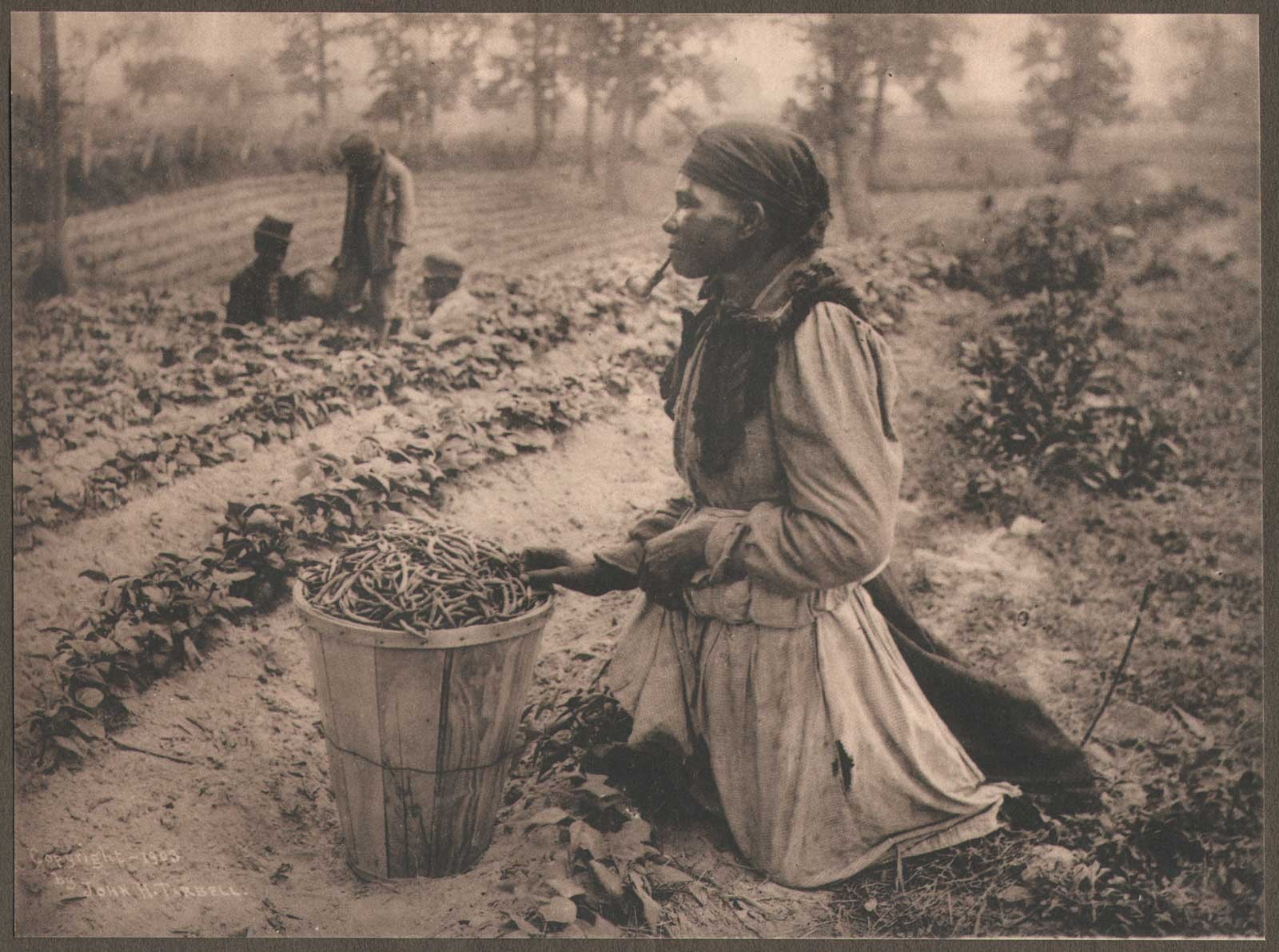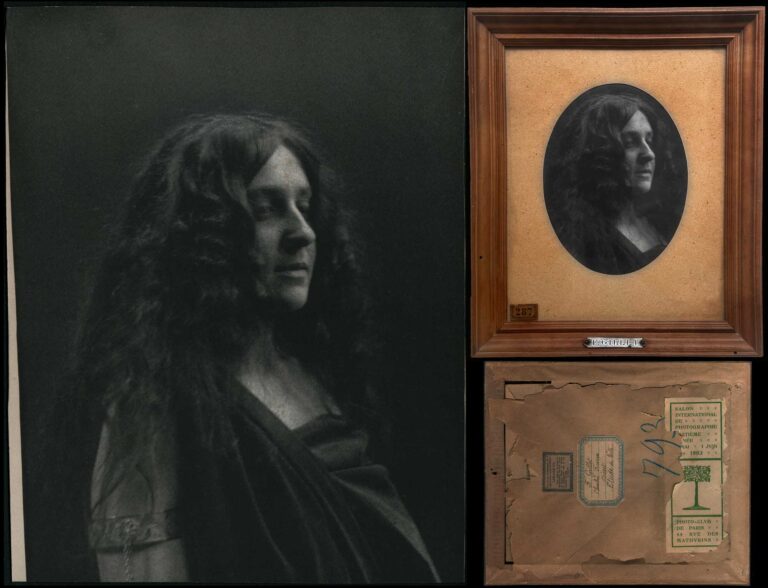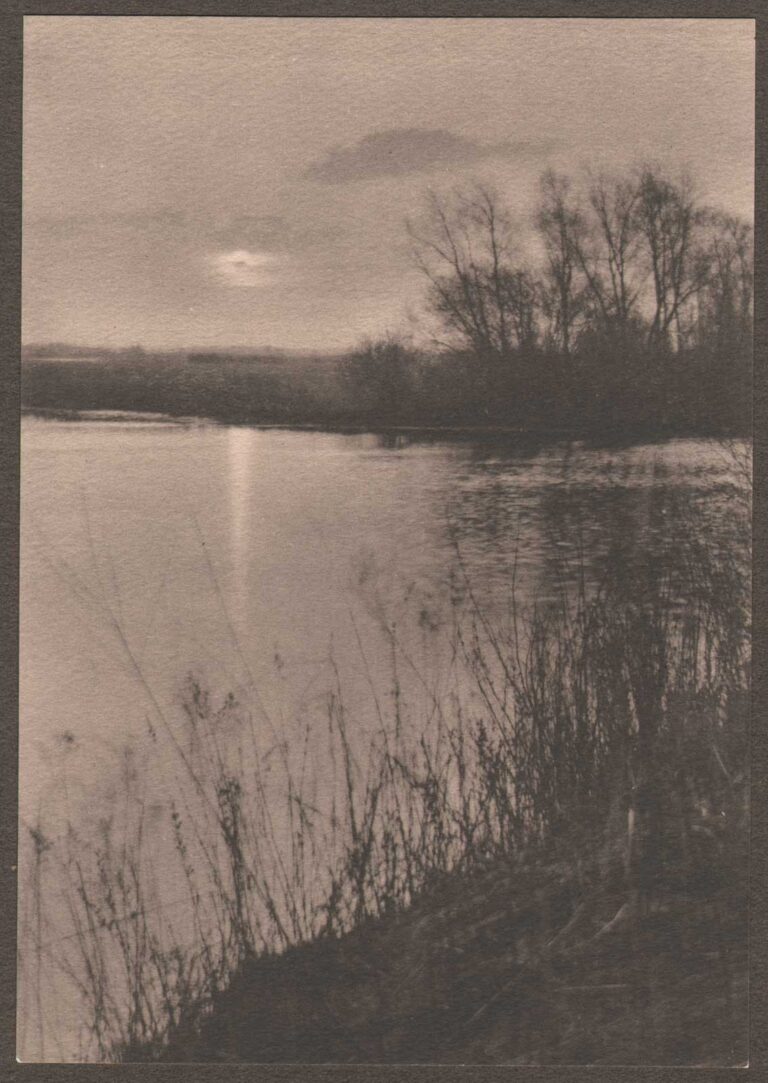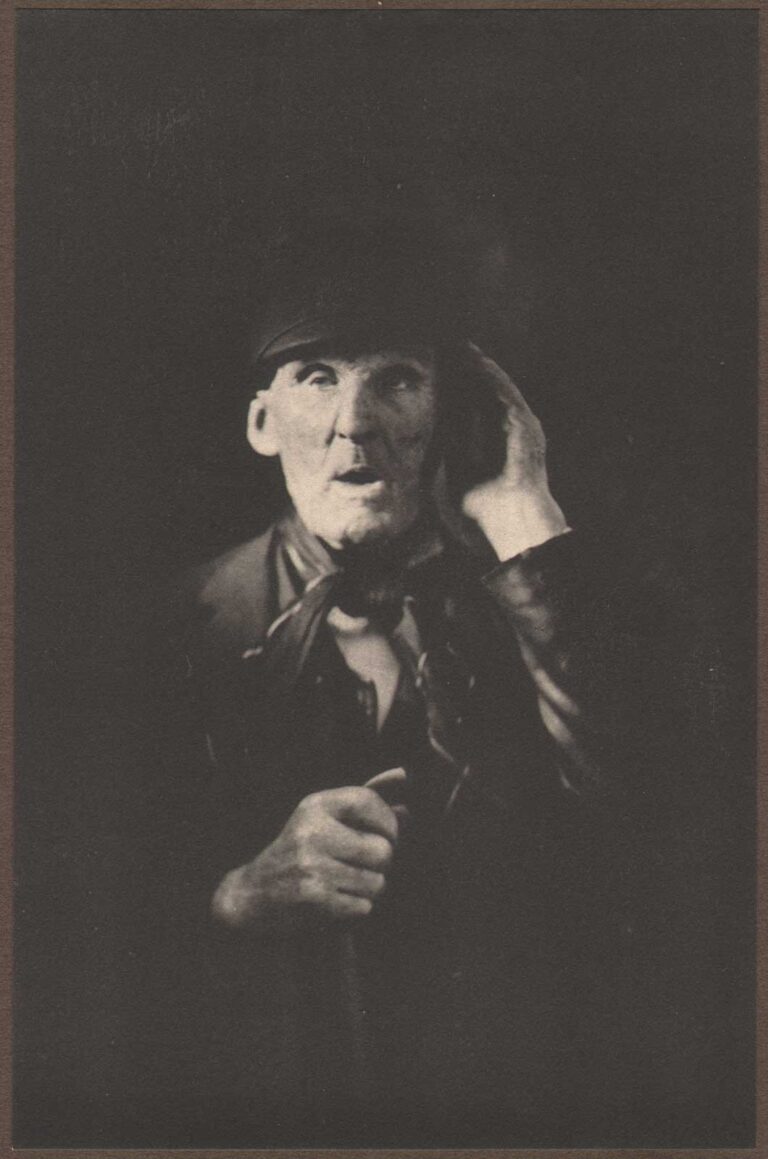
Scene on a Georgia Truck Farm
John H. Tarbell was from Washington, D.C. at the time this portfolio was published. In this photograph, an African American woman kneels in a field while picking green beans and smoking a pipe.
John Henry Tarbell: 1849-1929
John H. Tarbell (1849-1929) was a photographer who operated a studio in Asheville, N.C., between 1896 and 1901. Originally from Massachusetts, Tarbell returned to New England around 1902 and remained there until his death in 1929. The collection includes 68 images taken by John H. Tarbell between 1897 and 1907 (bulk 1897-1901). A majority of the images are believed to have been be taken in Asheville, N.C., and surrounding areas. Images include the Biltmore Estate, which at that time was the private residence of George Vanderbilt, and people and residences believed to be in the vicinity of Asheville, N.C. Tarbell’s images depicting African Americans in the southern parts of the United States were widely published during the early part of the twentieth century and appeared in publications including Cosmopolitan and New England Magazine; however, the collection contains none of those published images and only one image of an African American woman who may be Ms. “Aunt” Betsy Washington, whom Tarbell photographed/interviewed for an article in New England Magazine. (Source: Abstract: John H. Tarbell Photographic Collection, 1897-1907 (bulk 1897-1901) Collection Number: P0030: UNC University Libraries online resource accessed April, 2018)
In the December, 1903 issue of the New England Magazine, Tarbell wrote and illustrated the article “My Experiences Photographing the Negro in the South.” Often relying on popular yet degrading stereotypes of the day, it none the less reveals a window into African-American life around the environs of Asheville, North Carolina. An excerpt:
Editor’s Note:—There is probably no photographer in the country who has made such a success in photographing the Southern negro in his home surroundings as has Mr. Tarbell. His artistic taste shows itself in his clever selection and posing of subjects, while the results give an admirably correct portraiture of life as it actually exists among these people, so interesting in their quaint and homely ways.
DURING a period of nearly seven years spent in the Southern States and elsewhere, but principally in that region known as the Asheville Plateau, North Carolina, I became photographically interested in the characteristics of the negroes, and made a specialty of portraying them in their various occupations as well as in endeavoring to represent pictorially the humorous aspect of their nature. It is my intention in the following article to give some of my personal experiences in that direction, though my endeavor must, necessarily, be fragmentary, covering, as it does, several years’ residence in the South.
My greatest difficulty has always been to persuade the colored people to be photographed in their picturesque, every-day costumes, and it has always required the greatest tact to convince them that it was not from a desire to ridicule any peculiarities of the race; but their suspicions are easily aroused and only by the most persuasive eloquence has it been possible, in many cases, to overcome their native distrust. (pp. 463-65- article continues to p. 478)
print notes recto: engraved in the print at lower left corner from the negative: Copyright- 1903 by John H. Tarbell
Collection: New York Public Library IMAGE ID: 812887 (believed to be this photogravure example)



